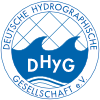HN Ausgaben wählen
- HN 132 (9)
- HN 131 (17)
- HN 130 (10)
- HN 129 (8)
- HN 128 (10)
- HN 127 (6)
- HN 126 (10)
- HN 125 (11)
- HN 124 (8)
- HN 123 (10)
- HN 122 (9)
- HN 121 (10)
- HN 120 (7)
- HN 119 (10)
- HN 118 (7)
- HN 117 (10)
- HN 116 (14)
- HN 115 (10)
- HN 114 (6)
- HN 113 (10)
- HN 112 (7)
- HN 111 (9)
- HN 110 (9)
- HN 109 (11)
- HN 108 (8)
- HN 107 (9)
- HN 106 (7)
- HN 105 (14)
- HN 104 (6)
- HN 103 (11)
- HN 102 (8)
- HN 101 (9)
- HN 100 (13)
- HN 097 (1)
Adjustment of backscatter data collected by multi-sector multi-swath multibeam echo sounders
While technological innovation and good survey practice has rendered bathymetric data collection more efficient and measurements both precise and accurate, so much cannot be said about backscatter data. Indeed, being more sensitive to geometrical, environmental and system-dependent effects, backscatter measurements suffer from poor quality when the latter effects are not accounted for in data collection and processing steps. A major detrimental component on backscatter measurements is the modulating effect of the echo sounder’s transmission sector pattern(s). This effect is clearly seen in backscatter images from echo sounders with multi-sector and multi-swath capabilities.
backscatter strength | SonarScope | multibeam echo sounder
- Ausgabe: HN 104 Seite: 11–15
- DOI: 10.23784/HN104-02
- Autor/en: Jean-Guy Nistad
Kartierung in den Fjorden Ost-Grönlands – Multibeam-Mapping mit einem Museumsschiff
Eine präzise Kartierung des Meeresbodens in unbekannten arktischen Gewässern mit driftenden Eisbergen und Schollen ist schon eine Herausforderung an sich. Wenn dann auch noch die Vermessung mit einem Oldtimer-Dreimast-Toppsegelschoner und einem temporär über die Seite installierten Fächerecholot erfolgt, sind Schwierigkeiten zu erwarten. Aber manchmal geht es nicht anders. Wenn kein anderes Schiff zur Verfügung steht, hat man nur die Wahl, es zu versuchen – oder bleiben zu lassen. Auch wenn die Hindernisse groß sind, es kann klappen.
Fächerecholot | SeaBeam 1050 | Fjordvermessung | Multibeam-Kartierung | Grönland | »Activ« | Timmiarmiut-Fjord | Skjoldungen-Fjord
- Ausgabe: HN 104 Seite: 6–10
- DOI: 10.23784/HN104-01
- Autor/en: Wilhelm Weinrebe
Hydrographie schafft Sicherheit und Wohlstand
Die Australasian Hydrographic Society (AHS) lud vom 4. bis zum 6. November 2015 nach Cairns ein, um die Bedeutung der Hydrographie für sowohl die weltweite als auch für die regionale Wirtschaft aufzuzeigen. Die Veranstalter des »Australasian Hydrographic Symposium 2015« gingen so weit, das Jahrhundert der Hydrographie auszurufen.
- Ausgabe: HN 103 Seite: 49–50
- DOI: 10.23784/HN103-11
- Autor/en: Holger Klindt
Seeschifffahrts-Sicherheitskonferenz
Unter dem Titel »Seeschifffahrts-Sicherheitskonferenz« hatte das Bundesministerium für Verkehr und Digitale Infrastruktur (BMVI) für den 10. und 11. November 2015 zahlreiche Fachleute aus allen Bereichen der Schifffahrtsbranche nach Berlin eingeladen. Über 100 Spezialisten der Branche waren der Einladung gefolgt, um über aktuelle Fragen zur Sicherheit im Seeverkehr und über zukünftige Herausforderungen zu diskutieren.
- Ausgabe: HN 103 Seite: 46
- DOI: 10.23784/HN103-10
- Autor/en: Holger Klindt
Hydrographie in Afrika
Rotterdam, Southampton, Aberdeen, Kapstadt – in der Serie der HYDRO-Konferenzen war zuletzt die Hydrographische Gesellschaft Südafrika (HSSA) der Gastgeber. Die HYDRO 2015 stand unter dem Motto »Developing sustainable Hydrography in Africa«. Vom 23. bis zum 25. November waren rund 140 Delegierte in Kapstadt, um sich über die Aufgaben der Hydrographie weltweit und über die besondere Rolle der Hydrographie in Afrika auszutauschen.
- Ausgabe: HN 103 Seite: 44–45
- DOI: 10.23784/HN103-09
- Autor/en: Holger Klindt


